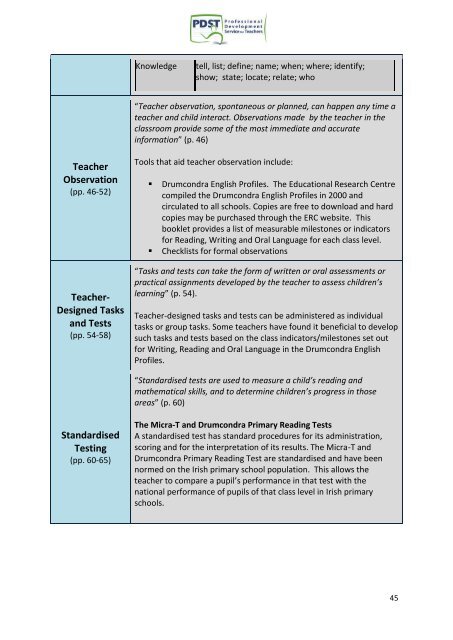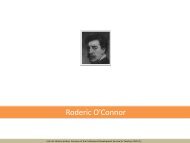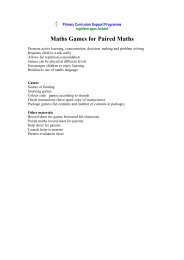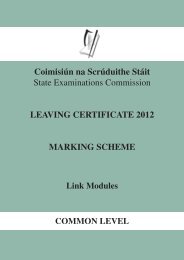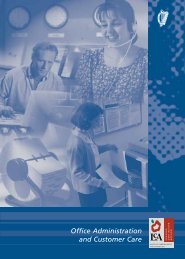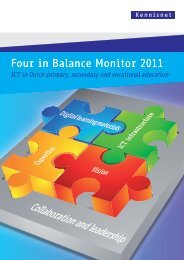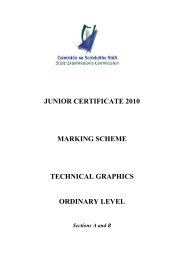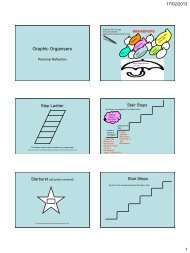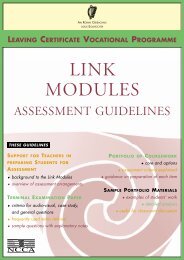Five Components of Effective Oral Language Instruction - PDST
Five Components of Effective Oral Language Instruction - PDST
Five Components of Effective Oral Language Instruction - PDST
You also want an ePaper? Increase the reach of your titles
YUMPU automatically turns print PDFs into web optimized ePapers that Google loves.
Teacher<br />
Observation<br />
(pp. 46-52)<br />
Teacher-<br />
Designed Tasks<br />
and Tests<br />
(pp. 54-58)<br />
Standardised<br />
Testing<br />
(pp. 60-65)<br />
Knowledge tell, list; define; name; when; where; identify;<br />
show; state; locate; relate; who<br />
“Teacher observation, spontaneous or planned, can happen any time a<br />
teacher and child interact. Observations made by the teacher in the<br />
classroom provide some <strong>of</strong> the most immediate and accurate<br />
information” (p. 46)<br />
Tools that aid teacher observation include:<br />
� Drumcondra English Pr<strong>of</strong>iles. The Educational Research Centre<br />
compiled the Drumcondra English Pr<strong>of</strong>iles in 2000 and<br />
circulated to all schools. Copies are free to download and hard<br />
copies may be purchased through the ERC website. This<br />
booklet provides a list <strong>of</strong> measurable milestones or indicators<br />
for Reading, Writing and <strong>Oral</strong> <strong>Language</strong> for each class level.<br />
� Checklists for formal observations<br />
“Tasks and tests can take the form <strong>of</strong> written or oral assessments or<br />
practical assignments developed by the teacher to assess children’s<br />
learning” (p. 54).<br />
Teacher-designed tasks and tests can be administered as individual<br />
tasks or group tasks. Some teachers have found it beneficial to develop<br />
such tasks and tests based on the class indicators/milestones set out<br />
for Writing, Reading and <strong>Oral</strong> <strong>Language</strong> in the Drumcondra English<br />
Pr<strong>of</strong>iles.<br />
“Standardised tests are used to measure a child’s reading and<br />
mathematical skills, and to determine children’s progress in those<br />
areas” (p. 60)<br />
The Micra-T and Drumcondra Primary Reading Tests<br />
A standardised test has standard procedures for its administration,<br />
scoring and for the interpretation <strong>of</strong> its results. The Micra-T and<br />
Drumcondra Primary Reading Test are standardised and have been<br />
normed on the Irish primary school population. This allows the<br />
teacher to compare a pupil’s performance in that test with the<br />
national performance <strong>of</strong> pupils <strong>of</strong> that class level in Irish primary<br />
schools.<br />
45


